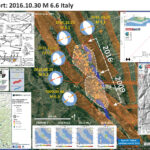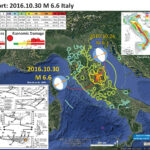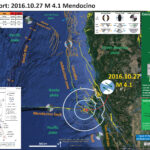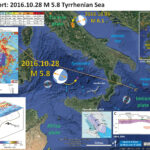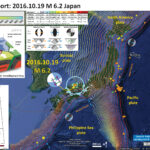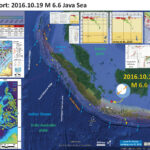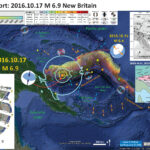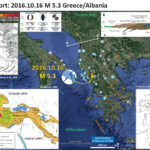Here is an update to the #EarthquakeReport for the M 6.6 earthquake that hit Italy early this morning my time. Ironically, I was preparing a report for earthquakes in the western Pacific for my class when this M 6.6 earthquake…
Earthquake Report: Italy!
There was just another earthquake in Italy. This one is a larger magnitude M = 6.6. This region has been especially seismically active since August 2016. Here are the USGS websites and Earthquake reports for this region of Italy. 2016.08.23…
Earthquake Report: Mendocino fault!
Yesterday there was an earthquake along the eastern extension of the Mendocino fault system. This magnitude M = 4.1 earthquake (here is the USGS website for this earthquake) is a small magnitude, but it was widely felt. I was in…
Earthquake Report: Tyrrhenian Sea!
There was just a very deep earthquake along a small subduction zone in the Mediterranean Sea. This subduction zone is formed along the southern coast of Italy where the Ionian plate subducts to the north. This subduction zone is part…
Earthquake Report: Italy
Italy continues to shake following the Armatrice Earthquake series in August 2016. Here is my report for that series of earthquakes. Today’s earthquakes occurred along the northern end of the earthquakes that happened a few months ago. Today’s series started…
Earthquake Report: Japan!
There was an earthquake in Japan tonight (tomorrow morning there). Here is the USGS website for this M 6.2 earthquake. The earthquake was shallow and widely felt with moderate intensity, so some casualties are expected. In the map below I…
Earthquake Report: Java Sea!
Last night as I was finishing work for the day, I noticed an earthquake in the Java Sea, just north of western Java. Here is the USGS website for this M 6.6 earthquake. This earthquake is extensional and plots very…
Earthquake Report: New Britain!
Last night there was a magnitude M 6.9 earthquake associated with the subduction zone that forms the New Britain Trench (where the Solomon Sea plate subducts northwards beneath the South Bismarck plate). The day before there was a M 6.4…
Earthquake Report: Greece/Albania
We are currently having a swarm of earthquakes along the political boundary which forms Greece and Albania. These earthquakes are just north of the western terminus of the North Anatolia fault (where it ends in Greece). To the north of…
Earthquake Report: South Bismarck Sea
There was a moderately deep earthquake in the South Bismarck Sea last night. Here is the USGS website for this earthquake. This earthquake has an exentional earthquake. Here, the Solomon Sea plate subducts northward beneath the South Bismarck plate to…

